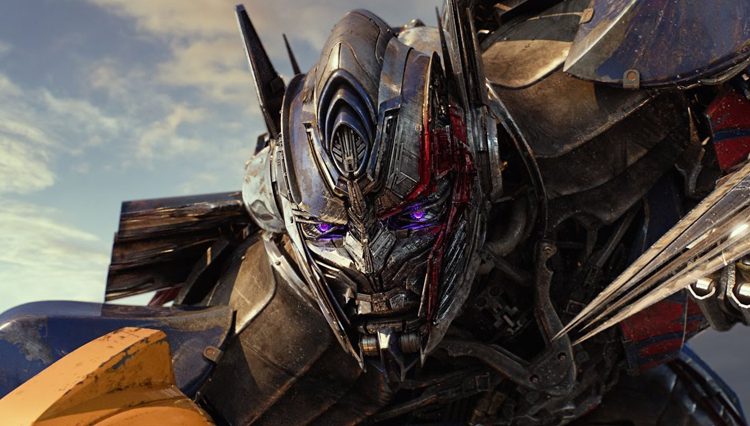It should be noted about Quentin Tarantino’s movies… every film is completely different from the others. From a heist film (Reservoir Dogs), a World War 2 movie (Inglorious Basterds), Spaghetti Western (The Hateful Eight), to a race car movie (Death Proof), it is impossible to compare one movie to another beyond the style of direction. Having followed The Hateful Eight, in what might be considered (production and visually speaking) his best film to date, Once Upon a Time in… Hollywood is a feast for cinema buffs.

Hollywood movies about Hollywood have always held a special place in the hearts of cinephiles, from Sunset Boulevard, All About Eve to Sullivan’s Travels, but always appreciated for the theater attendee who has practically seen it all. For the mainstream crowd rushing to theaters this weekend to see the next Quentin Tarantino classic, billed as his ninth movie (of which Tarantino said multiple times that he would only do ten movies in his career), I suspect they may find this movie a bit of a let down… considering the fact that this movie was clearly written with cinephiles in mind.
That said, this qualifies in the genre of Hollywood movies about Hollywood. Leonardo DiCaprio plays actor Rick Dalton, a faded television actor who, in 1969, realizes he is officially a “has-been.” Hoping to achieve fame and success, he agrees to star in a series of Spaghetti Westerns over in Europe, a transition many actors at the time were more than willing to make in order to pay the bills. Brad Pitt plays Dalton’s stunt man, Cliff Booth, a handyman with no illusions or expectations who lives every day based on what the stars (or the Fates) dictate. Along the way (as foreshadowed at the beginning of the movie), Rick and Cliff will have a brush with members of the Charles Manson cult, providing bloodshed for those with a violent expectation level from Tarantino’s movies.
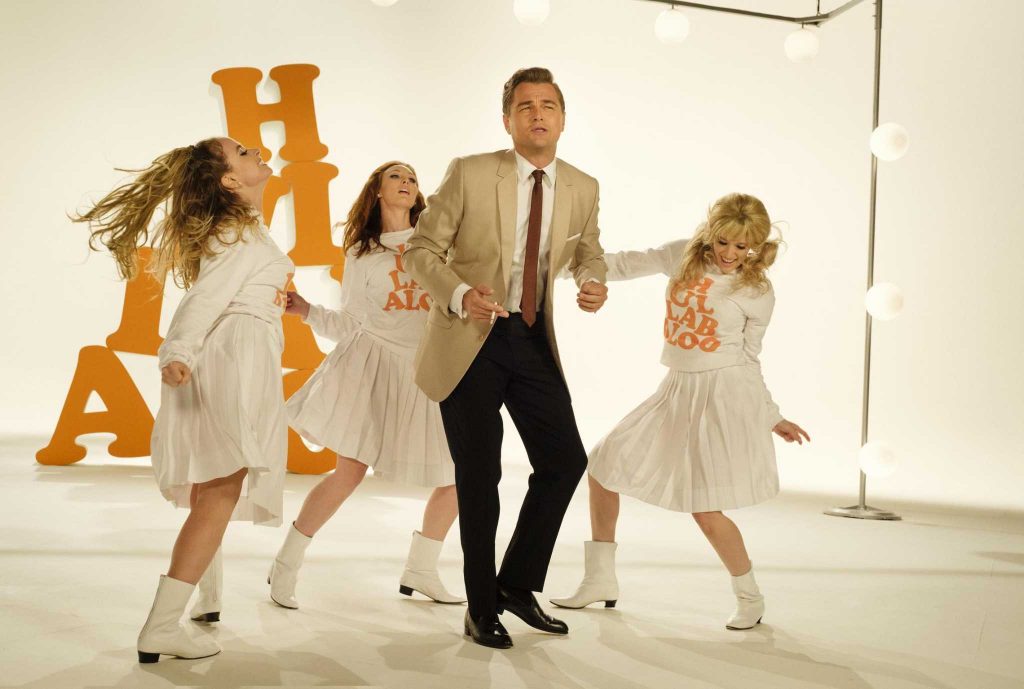
The entire story could have been dramatized in less than an hour but leave it to Tarantino to create a movie that stretches two and a half hours, with multiple scenes that dramatize the inner workings of Hollywood circa 1969, and maintain your interest. While I have yet to find myself looking at the clock while watching any of Tarantino’s movies, including those that stretch over three hours, this is the first film that concluded without me wishing there was an additional half-hour. A number of the scenes (such as Sharon Tate’s visit to the local theater to watch herself on the big screen in The Wrecking Crew) could be removed from the final print and the story would have flowed without any noticeable scenes missing that are intricate to the story. This creates a disjointed method of storytelling, unlike the style of Pulp Fiction, and requires better scripting in the plot. (Tarantino is a good writer, but even good writers learn to write a four-hour movie, throw half of the pages away, and revise the remaining material. Here, Tarantino kept scenes in that should not have been included as intent and purpose is not clearly defined.)
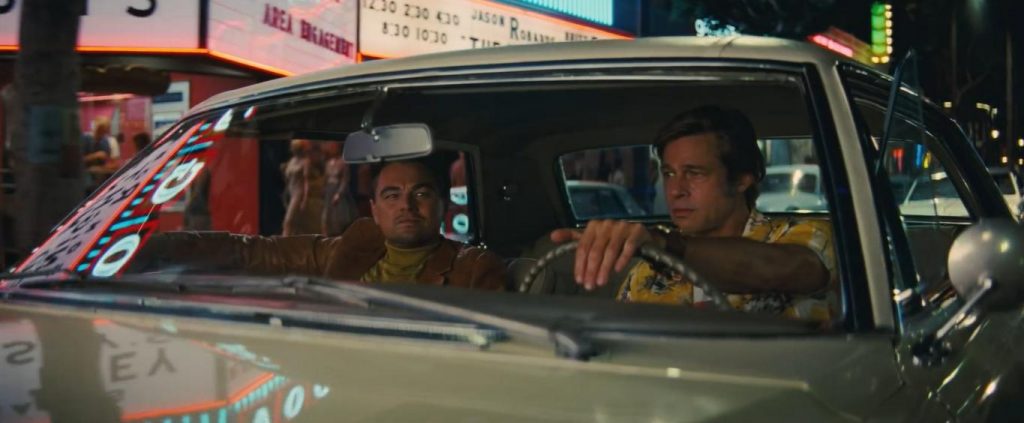
But make no mistake: this movie was made for cinephiles. The opening scene demonstrated a 1950s television western complete with Andrew McLaglen and John Ford technique, stock music from the CBS library, and the Wilhelm scream. (If you do not know what the Wilhelm scream is, I recommend you check this out for amusement: https://en.wikipedia.org/wiki/Wilhelm_scream). A movie poster for the 1949 Roy Rogers western, The Golden Stallion, can be seen hanging on the wall in more than one scene… a nod to Tarantino’s insistence that director William Whitney was one of the best directors ever. The scene with Bruce Lee reciting his philosophy and the often-rumored “No one kicks Bruce Lee’s ass” ends with a Mexican standoff is a joke only Bruce Lee fans will appreciate. Practically every 30 seconds there is a nod to vintage pop culture in the form of visuals, impersonators, references to television programs, movie posters, billboards, music on the radio and a glimpse of Larry Edmund’s Cinema and Theatre Bookshop. The majority of these cultural references (such as DiCaprio insulting hippies by calling one of them Dennis Hopper) may go over the heads of most in the theater watching the movie. Cinephiles “in the know,” however, will find many of these brief vignettes both hilarious and exceptional. Not as mini-movies but as scenes of cinematic brilliance.
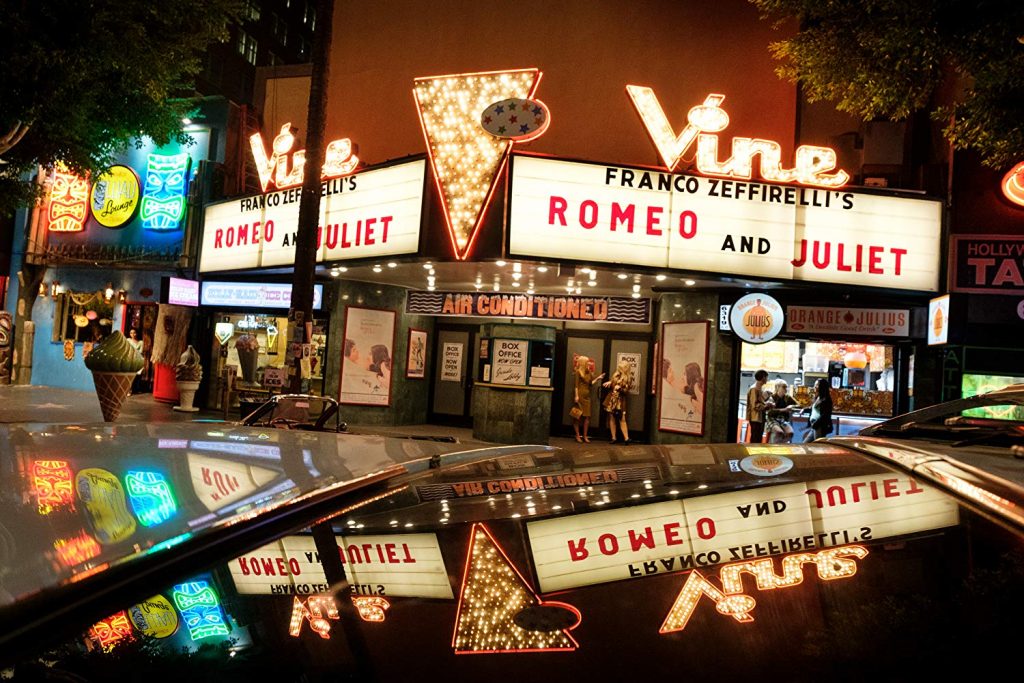
There is not a bad performance throughout, as expected from any film directed by Quentin Tarantino. Brad Pitt as Cliff Booth and actress Margaret Qualley as Pussycat stand out above all others. Leonardo DiCaprio may have just given his best performance in a motion picture. (DiCaprio is DiCaprio in every movie he stars in but for half of this movie you will find yourself forgetting he is DiCaprio.) The special effects to mimic 1969 Los Angeles, along with replication and alteration of retro television programs, screen tests, and movie posters is top-notch — money well spent and deserving of acknowledgment. This may not be a superhero blockbuster but there should be an Oscar nomination for best special/visual effects.
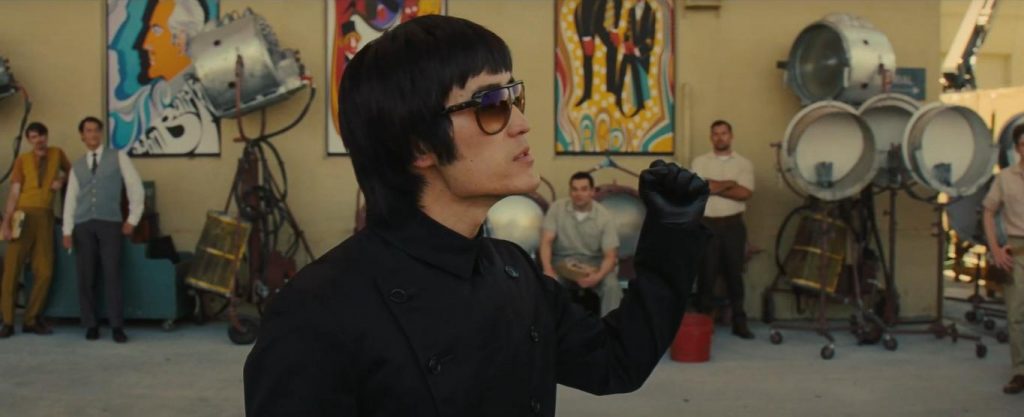
Knowing all of this in advance before going in to see the movie will help assure your enjoyment in a movie that is a feast for cinephiles, and an entertaining romp for others. But who can hate a movie created with a passion for old movies… especially one that features Tarantino-alumni Tim Roth in the closing credits if for no other reason than to acknowledge that his scene ended up on the cutting room floor?


